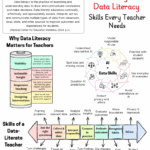A new Indian report shows 20% of students rarely feel motivated or calm. Globally, exam stress, late-night screens, and stigma are driving a silent school crisis.
MUMBAI / NEW DELHI — August 2025.
A new report from the IC3 Institute and the Council for the Indian School Certificate Examinations (CISCE) has delivered a sobering message: nearly one in five Indian high schoolers says they rarely feel motivated or calm. Sleep deprivation, career anxiety, and low confidence dominate the teenage psyche. Girls report the highest distress, citing family pressure and social stigma.
The numbers are not abstract. They reveal a generation quietly carrying the weight of board exams, parental expectations, and a culture where academic performance is often equated with personal worth. In interviews conducted for the study, students described cycles of late-night screen use, exhaustion, and a sense of being trapped.
What’s happening in India is not an isolated story. Across the world, the same themes are emerging: the classroom is no longer just a place for learning—it’s a frontline for mental health.
India: The Pressure Cooker
The IC3–CISCE pulse check, conducted across 1,200 Indian schools, highlighted:
- 20% of students report feeling rarely calm or motivated.
- Girls more frequently reported anxiety, sleep issues, and lack of emotional support.
- Career uncertainty was cited as a key driver of stress, with students unsure if their academic work would translate to jobs.
- Late-night device use compounds the problem, disrupting sleep and focus.
Indian educators say the problem is structural: counselor-to-student ratios remain abysmal, with fewer than one counselor for every 5,000 students in many states. Mental health is not integrated into curricula, and stigma still prevents families from seeking professional help.
U.S.: Loneliness in the Digital Hallway
In the United States, the story carries a different accent but similar meaning.
- The CDC’s Youth Risk Behavior Survey (2023) found 42% of high school students reported persistent sadness or hopelessness—the highest in a decade.
- Among teenage girls, nearly three in five said they felt persistently sad or hopeless, and 30% seriously considered suicide.
- Social media use is a central driver. The U.S. Surgeon General in 2024 even called for tobacco-style warning labels on platforms, citing evidence of links to anxiety, poor sleep, and body image issues.
American schools, particularly after COVID-19, have begun embedding wellness programs, peer counseling, and digital literacy, but the crisis remains acute.
UK & Europe: The Weight of Exams and Austerity
Across the Atlantic, UK teenagers tell a familiar story.
- NHS Digital data shows one in six children aged 7–16 in England has a probable mental health disorder. Among older teens (17–19), that rises to one in four.
- Exam stress is central: surveys by The Children’s Society find GCSE and A-level students reporting heightened anxiety.
- School budget cuts have worsened the problem: one in three schools has reduced funding for mental health support staff since 2020.
In Europe more broadly, the OECD reports 23% of 15-year-olds feel “always nervous” about school tests, a rate higher than global averages. Nordic countries, despite their reputations for welfare, are not immune—Sweden reports rising cases of anxiety linked to academic pressure and social media.
Asia: The Perfection Trap
In East Asia, the numbers are even starker.
- In South Korea, long considered the most exam-intense culture, surveys show over 70% of high school students report stress from academic performance; suicide remains the leading cause of death for teenagers.
- In China, mental health is gaining policy attention after studies found nearly 25% of adolescents show symptoms of depression. The government has started mandating mental health classes in schools.
- In Japan, a record 514 under-18 suicides were reported in 2023—driven by bullying, exam stress, and isolation.
The shared thread: high-stakes exams, long hours, and limited emotional outlets leave little space for balance.
Why It Matters Now
Globally, the World Health Organization estimates 14% of 10–19-year-olds live with a mental health condition. Suicide is the fourth leading cause of death among 15–29-year-olds. Yet, in nearly every region, the gap between policy rhetoric and practical school-level support remains wide.
What’s striking is the uniformity of risk factors:
- Sleep disruption from late-night screen use.
- Exam stress as a defining cultural pressure.
- Gender disparity, with girls disproportionately reporting anxiety and hopelessness.
- Counseling gaps in schools, especially in low- and middle-income countries.
What Can Change the Story
The evidence suggests fixes are possible—but only if schools, parents, and governments move beyond token gestures.
- Early counseling in schools. Evidence from the UK and U.S. shows that embedding counselors at a ratio of 1:250 students improves early detection. India’s current ratios fall short by a factor of 20.
- Peer networks. Programs like Zimbabwe’s Friendship Bench—where trained peers provide talk therapy—have shown scalable success and could be adapted to Indian schoolyards.
- Life skills in the curriculum. Singapore integrates socio-emotional learning into core curricula, teaching empathy, resilience, and problem-solving.
- Digital interventions. Apps designed in India, such as Wysa (an AI mental health chatbot), are already providing millions with low-stigma access to support.
- Normalize conversations. The greatest barrier is cultural: students fear being labeled “weak.” Campaigns led by youth ambassadors—much like climate movements—are starting to shift this narrative.
The Generation at Stake
From Mumbai to Manchester, Seoul to San Francisco, the details differ but the diagnosis is the same: a generation of students is absorbing stress levels that previous generations rarely faced. The risk is not just individual burnout, but a broader loss of creativity, resilience, and trust in institutions.
The silence is breaking—through surveys, protests, and whispered conversations in classrooms. The question is whether schools and societies are ready to hear it, and more importantly, to act.







